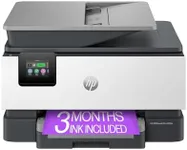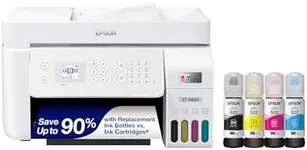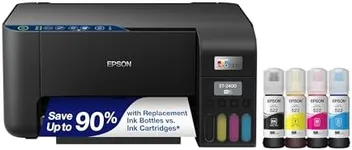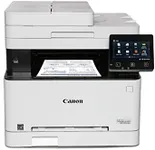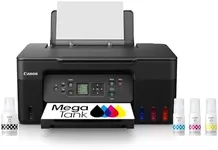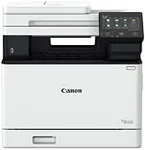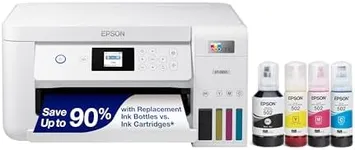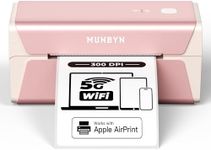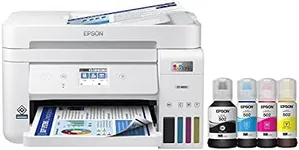Buying Guide for the Best Affordable Printers
Choosing the right printer can be a daunting task, especially with the wide variety of options available. To make an informed decision, it's important to understand the key specifications and how they align with your needs. This guide will help you navigate through the essential features to consider when selecting an affordable printer that best fits your requirements.Print TechnologyPrint technology refers to the method a printer uses to produce text and images on paper. The two main types are inkjet and laser printers. Inkjet printers are versatile and can handle a variety of print jobs, including high-quality photos, making them ideal for home use or small offices. Laser printers, on the other hand, are known for their speed and efficiency in printing large volumes of text documents, making them suitable for office environments. Choose inkjet if you need color prints and photos, and laser if you need fast, high-volume text printing.
Print SpeedPrint speed is measured in pages per minute (PPM) and indicates how quickly a printer can produce documents. This is important if you need to print large documents frequently. Entry-level printers may offer speeds of around 5-10 PPM, which is sufficient for occasional use. Mid-range printers can print at speeds of 15-20 PPM, suitable for moderate use. High-end models can exceed 30 PPM, ideal for heavy use in busy offices. Consider your typical print volume and choose a printer with a speed that matches your needs.
Print QualityPrint quality is measured in dots per inch (DPI) and determines the clarity and detail of the printed output. Higher DPI values result in sharper and more detailed prints. For general document printing, a DPI of 600x600 is usually sufficient. For high-quality photo printing, look for printers with at least 1200x1200 DPI. If you need professional-grade prints, consider models with even higher DPI. Assess the type of documents or images you will be printing most often to determine the appropriate print quality.
Connectivity OptionsConnectivity options refer to the ways you can connect your printer to your devices. Common options include USB, Wi-Fi, and Ethernet. USB connections are straightforward and reliable for single-device use. Wi-Fi connectivity allows for wireless printing from multiple devices, including smartphones and tablets, making it convenient for home and office use. Ethernet connections are ideal for networked environments where multiple users need access to the printer. Consider your setup and choose a printer with the connectivity options that best suit your needs.
Paper HandlingPaper handling capabilities include the types and sizes of paper a printer can accommodate, as well as the capacity of its paper trays. Basic printers may handle standard letter and legal sizes with a single input tray. More advanced models can support a variety of paper types, such as envelopes, labels, and photo paper, and may have multiple trays for different media. If you frequently print on different paper types or need to print large volumes without frequent reloading, look for printers with higher paper capacity and versatile handling options.
Cost of ConsumablesThe cost of consumables includes the price of ink or toner cartridges and other replaceable parts. This is an important factor to consider as it affects the long-term cost of owning a printer. Inkjet printers typically have lower upfront costs but higher ongoing costs for ink. Laser printers have higher initial costs but lower per-page costs for toner. Research the cost and yield of consumables for the models you are considering to understand the total cost of ownership. Choose a printer with affordable consumables that fit your printing volume and budget.
Additional FeaturesAdditional features can enhance the functionality and convenience of a printer. Common features include duplex printing (automatic double-sided printing), scanning, copying, and faxing capabilities. Some printers also offer mobile printing support, allowing you to print directly from your smartphone or tablet. Consider which additional features are important for your workflow. For example, duplex printing can save paper and reduce costs, while scanning and copying functions can eliminate the need for separate devices. Choose a printer with the features that will best support your needs.

